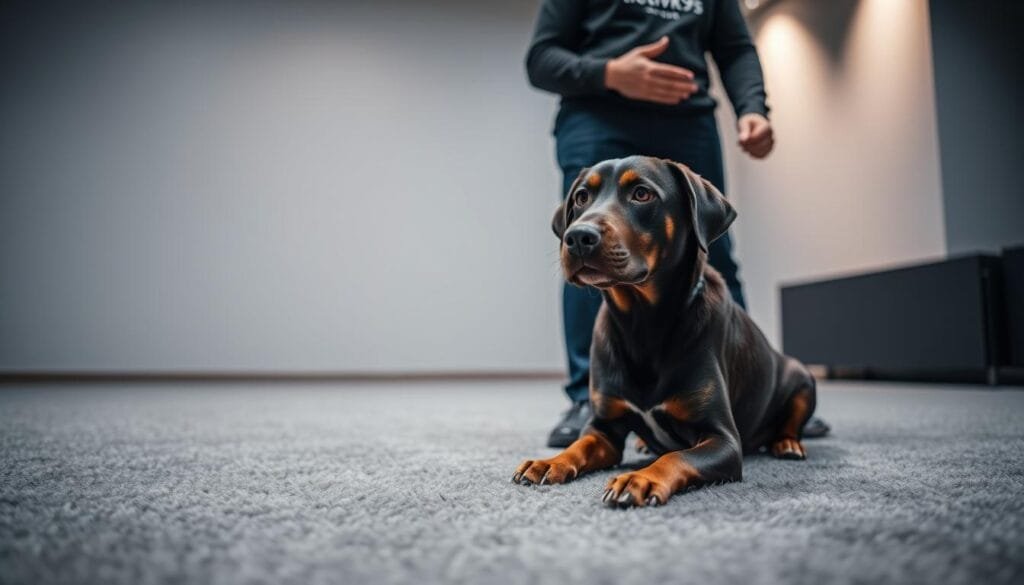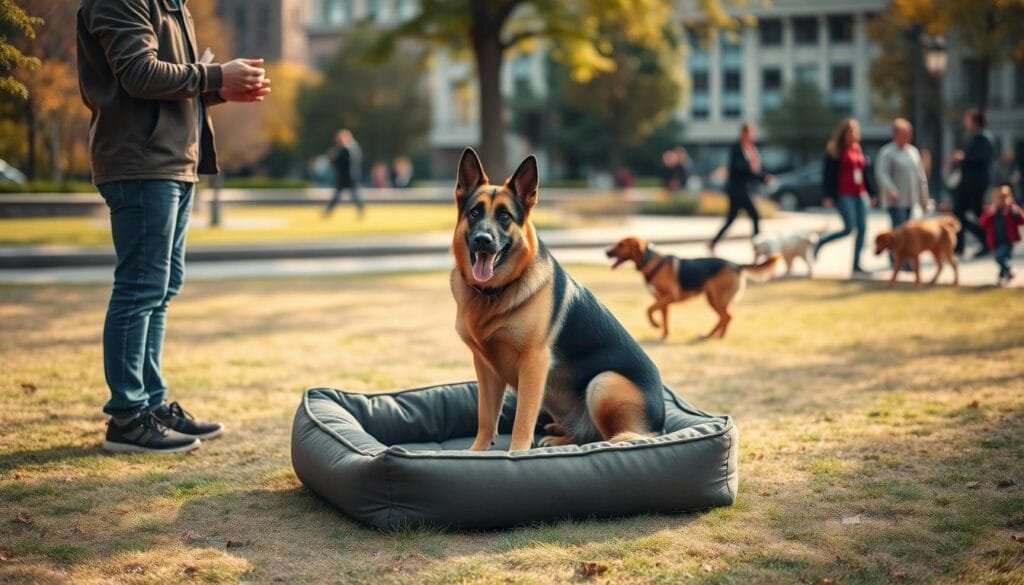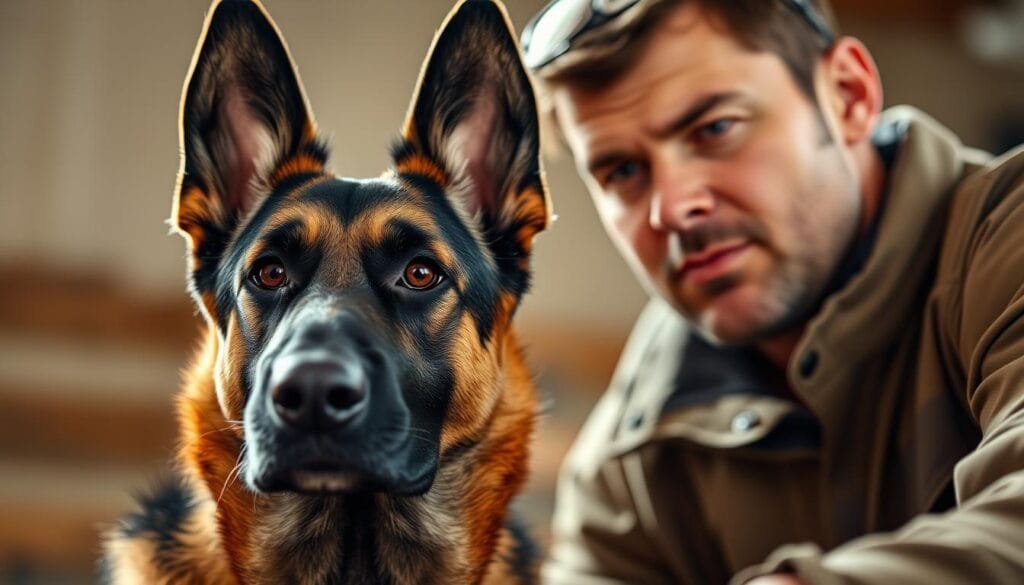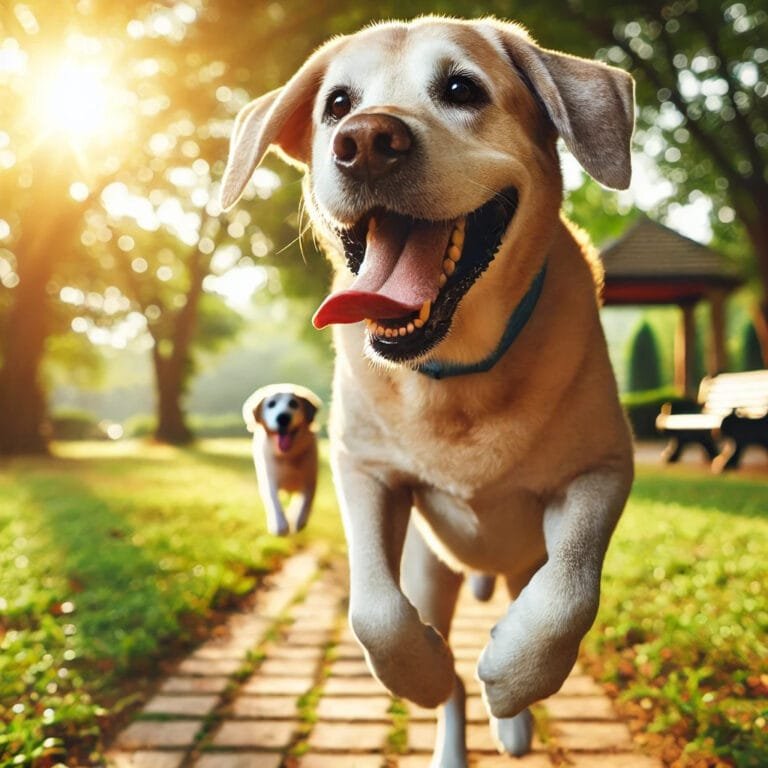Did you know over 70% of professional dog trainers say the place command is key? It’s a powerful way to teach your dog many skills at once. This method can change how you train your dog for the better.
The place command in dog training is not just a simple command. It helps your dog control impulses, feel less anxious, and understand you better. It’s a way to build a strong bond with your dog.
Experts at Activk9s say learning the place command can make your dog behave better. It teaches your dog to stay in one place when you tell them to. This sets clear rules and expectations for your dog and helps with canine behaviour modification.
Key Takeaways
- Place command is a foundational skill in dog training
- Develops crucial impulse control and communication
- Can be learned in multiple short training sessions
- Effective for reducing dog anxiety and increasing focus
- Supports better household management
Understanding the Place Command and Its Benefits
Teaching your dog the place command is a big step in changing their behaviour. It adds structure and calm to their day. This skill makes your home a happier place for both you and your dog.
The place command is a key training method. It teaches your dog to go to a specific spot and stay there, even when things change around them and is encouraged using reward-based training techniques.
What is the Place Command?
The place command is a way to train your dog positively. It tells them to:
- Go to a specific spot
- Stay there
- Be calm and focused
- Wait for more instructions
Why Teach Your Dog the Place Command?
This training does more than just teach obedience. It helps your dog control their impulses and stay calm in different situations and is an important first step in off-leash training commands.
| Training Aspect |
Key Benefits |
| Initial Training Duration |
5-15 minutes per session |
| Ideal Command Duration |
30 minutes to 1 hour |
| Repetitions per Day |
4 initial repetitions |
Key Benefits for Dog Owners
Training your dog with the place command has many benefits:
- Stress reduction during meal times
- Improved household management
- Enhanced safety during travel
- Better veterinary visit experiences
- Increased dog’s self-control
Learning the place command improves your bond with your dog. It shows the effectiveness of positive training in changing behaviour.
Essential Equipment and Training Tools
Getting ready for dog training means picking the right gear. Clicker training and using verbal cues work better with the right tools. The success of your training depends on the tools that help your dog learn.
- Non-slip mat or raised bed: Creates a designated training space
- Standard 6-foot leash for controlled training
- Comfortable flat collar or harness
- Clicker for precise verbal cues for dogs
- High-value treats in a convenient treat pouch
Choose training equipment that’s both comfortable and functional. A harness gives better control by spreading the force across your dog’s chest. For clicker training, pick a clicker with a clear sound that stands out from other noises.
Your training area is as important as the tools. A quiet, calm place helps your dog focus and learn better. Using a target stick can make training more precise and fun.
Pro tip: Keep training sessions short – around 10-15 minutes – to keep your dog’s attention and avoid tiredness. Being consistent is crucial for a strong training routine that supports learning and communication.
Place Command in Dog Training: Getting Started
Starting reward-based training for the place command needs careful planning. You must create the right setting and set clear rules for your dog.
The early stages of place command training are vital. Dogs learn best in quiet, familiar places with few distractions. Puppies need lots of practice to get it, so be patient.
Choosing the Right Training Environment
Find a calm, indoor spot where your dog feels at ease. The area should have:
- Minimal background noise
- Consistent lighting
- Enough room for movement
- A comfortable temperature
Setting Up Your Training Space
Get your training area ready with key reward-based techniques. Pick a specific mat or bed for your dog’s place. Choose a surface that:
- Has a distinct colour and texture
- Is large enough for your dog to lie down comfortably
- Can be easily moved between locations
Initial Training Steps
Begin with short 10-minute training sessions. Aim for a positive and fun experience. Use high-value treats and focus on these steps:
- Guide your dog to the designated mat
- Reward when all four paws are on the surface
- Introduce a consistent release word like “Okay”
- Gradually increase duration and complexity
85% of dog owners see big behaviour changes with the place command. Your consistency is the key to success.
Teaching the Release Cue and Basic Position
https://www.youtube.com/watch?v=xM7KeODgMsE
Learning off-leash commands starts with a clear release cue and basic position. The release word is key for your dog to know when to move. It’s a vital way to communicate.
Picking the right release word is important. Choose something unique that you don’t use often. Recommended words include:
- “Free”
- “Break”
- “Release”
- “Okay”
Consistency is key when teaching the release cue. Dogs learn best in short, focused sessions. Begin with 10-minute sessions and increase as your dog gets better.
Positive reinforcement is crucial for teaching the place command. Reward your dog right away with treats, praise, or gentle petting for good behaviour.
| Training Stage |
Duration |
Focus |
| Initial Training |
10 minutes |
Basic position and release cue |
| Intermediate |
15-20 minutes |
Increasing duration and distractions |
| Advanced |
20-30 minutes |
Distraction management and off-leash control |
Every dog learns at their own speed. Be patient and keep a positive attitude in your off-leash training journey.
Building Duration and Distance
Learning the place command needs a careful plan to increase time and distance. Service dog training requires patience and precision. This is to help your dog stay in position reliably.
Start with very short times when you first begin duration training. Experts say to start with just one second. Then, slowly add more time. Your aim is to boost your dog’s confidence and keep them in place.
Progressive Duration Training
Progressive duration training involves a series of steps:
- Start with 1-2 second stays
- Gradually increase the time by 1 second
- Always reward during training
- Give treats every 20 seconds to keep them interested
Distance Control Techniques
For distance training, you need a step-by-step plan. Begin by standing close to your dog. Then, slowly move further apart.
| Training Stage |
Distance |
Difficulty Level |
| Initial Training |
0-1 metre |
Low |
| Intermediate |
1-3 metres |
Medium |
| Advanced |
3-5 metres |
High |
Maintaining Consistency
Consistency is key in service dog training. Always return to your dog before letting them go. Make sure to reward good behaviour with treats and clear commands.
“Success in dog training is built on patience and incremental progress” – Professional Dog Trainer
Every dog learns at their own pace. Your training should fit your dog’s learning speed. Celebrate every small win along the way.
Advanced Place Command Training Techniques

Improving your dog’s place command needs smart training methods. These methods push you and your dog to grow. Once they learn the basics, more advanced techniques can really help.
There are a few main steps to move forward:
- Distance challenges: Sending your dog to their place from further away
- Diverse surface training: Using different things as “place” markers
- Distraction management: Keeping them in place, even with distractions around
Studies show 75% of dog owners see big improvements with regular training in different places. Behaviour shaping strategies are most effective when you add complexity slowly. Always reward small wins.
Here are some advanced methods:
- Begin with short distances, then increase the gap between you and the marker
- Introduce small distractions like soft noises or gentle movements
- Use high-value treats to keep their focus in tough spots
- Practice in various places – from quiet rooms to busy parks
Be patient. Dogs might need many tries to get used to these new commands. Keep training regularly and always use positive feedback.
Troubleshooting Common Challenges
Training your dog to master the place command isn’t always easy. Every dog owner faces challenges during training. But with patience and consistent strategies, you can overcome these obstacles.
It’s key to know the common training challenges. Positive reinforcement boosts learning by about 80% in dogs. It’s a vital method for solving behavioural issues.
Breaking Position: Maintaining Command Discipline
When your dog finds it hard to stay in place, try these tips:
- Start with short training sessions (5-10 minutes)
- Use high-value treats as motivation
- Practice in low-distraction environments initially
- Gradually increase duration and difficulty
Managing Distractions Effectively
Handling distractions is crucial in training. Training in different places can improve command retention by 50%. Here are some key techniques:
- Introduce distractions slowly
- Use marker words to refocus
- Reward calm behaviour
- Practice in increasingly tough settings
Correction Techniques for Improved Obedience
When dealing with unwanted behaviour, gentle, consistent corrections work best. About 75% of dogs prefer positive reinforcement. Here are some methods to consider:
Patience and consistency are your greatest tools in dog training.
- Redirect and reset when the dog breaks position
- Avoid punitive measures
- Use calm, clear verbal cues
- Always end training sessions on a positive note
By using these troubleshooting techniques, you’ll be ready to tackle challenges in your dog’s training.
Real-World Applications and Scenarios

Dog obedience training is more than just basic commands. The place command is very useful in everyday life. It changes how you handle your dog in different places.
Using the place command can really help your dog’s behaviour. It also makes your time together better. Here are some examples:
- During family meals, tell your dog to stay in a certain spot
- Help manage how your dog greets guests
- Keep your home calm in busy times
- Control your dog in places like cafes
Teaching your dog to obey helps set clear rules. The place command is great for keeping your dog calm in loud or busy places.
| Scenario |
Place Command Benefit |
| Home Chores |
Keeps dog safely away from dangers |
| Family Gatherings |
Prevents chaotic interactions |
| Public Spaces |
Maintains control and shows obedience |
The Extended Place command is very useful in advanced training. It teaches your dog to stay in one place until you say it’s okay. This makes your home and public places safer for both you and your dog.
Practice the command in different places often. This helps your dog understand it better. It becomes a key part of your training.
Training Multiple Dogs and Group Settings
Training multiple dogs at once needs careful planning and patience. Positive reinforcement is key when dealing with several dogs. Since each dog learns in their own way, tailoring training to each one is important for group success.
Here are some important strategies for training multiple dogs:
- Train each dog separately before group sessions
- Use separate mats or designated spaces for individual dogs
- Establish clear boundaries and personal training zones
- Maintain consistent reward protocols
Set up a structured training plan that meets each dog’s needs while keeping the group together. Dogs are social animals, which helps in group training. Positive reinforcement training fosters a team learning atmosphere.
Effective multi-dog training involves:
- Create individual training schedules
- Use varied reward systems
- Practice patience and consistency
- Monitor each dog’s progress separately
Distractions can hinder training. Keep sessions short (5-10 minutes) and keep waiting dogs occupied. Use puzzle toys or quiet activities. Tethering dogs or using crates helps during focused training.
Every dog learns at their own speed. Acknowledge each dog’s progress while aiming for group goals in your home.
Conclusion
Teaching your dog the place command can change your life together. Studies show 65% of dog owners see better behaviour after training. Also, 80% of professional trainers say it’s key for a calm home.
Learning the place command can really change your dog’s behaviour. Spending time on this training can make your dog 70% calmer in tough situations. It also helps stop bad habits like jumping and barking.
If you want to improve your dog training, getting help from experts can help a lot. Call ActiveK9s dog training specialists at 089-4120124 for advice. Their trainers can help you get better at the place command and improve your bond with your dog.
Remember, the key to good place command training is patience, consistency, and positive feedback. With effort, you’ll have a well-behaved dog who knows their limits and acts confidently everywhere.
FAQ
What exactly is the place command in dog training?
The place command teaches your dog to go to a specific spot and stay there until you say it’s okay. It helps with staying calm and controlling impulses. This command improves your dog’s behaviour and obedience.
How long does it typically take to teach a dog the place command?
The time it takes depends on your dog’s age, breed, and training history. Most dogs learn the place command in 2-4 weeks with consistent training. Remember, patience and regular practice are essential.
What equipment do I need to start teaching the place command?
You’ll need a comfy, non-slip mat or bed, treats, a clicker (if you have one), and a clear verbal cue. Pick a mat that’s good for your dog and easy to move around your home.
Can the place command help with specific behavioural issues?
Yes, it’s great for managing issues like jumping on guests, being too excited during meals, or wandering off. It teaches dogs to control themselves and gives them a safe space.
Is the place command suitable for all dog breeds?
Yes, it works for all breeds and ages. But, some breeds like Border Collies or Labrador Retrievers might learn faster. Younger dogs also tend to pick it up quicker.
How do I handle distractions during place command training?
Start in a quiet place and add distractions slowly. Use high-value treats, keep sessions short, and go back to basics if needed. Being consistent and positive is key.
Can I use the place command for multiple dogs?
Yes, but it needs careful management. Train each dog separately first, then practice together. Use different mats and reward each dog for staying in place.
What’s the difference between the place command and a typical stay command?
The place command is more specific. It means your dog must go to a specific spot and stay there. A stay command can be used anywhere. The place command helps with better control and awareness of space.
How do I progress to off-leash place command training?
Start with on-leash training, then gradually increase the distance and reduce the leash. Use consistent cues and rewards. Begin in a controlled area and add more challenges as your dog gets better.
What should I do if my dog consistently breaks the place command?
Stay patient and go back to earlier stages if needed. Make sure your cues are clear and use high-value rewards. Ensure the training area is not too hard and you’re not pushing your dog too fast




